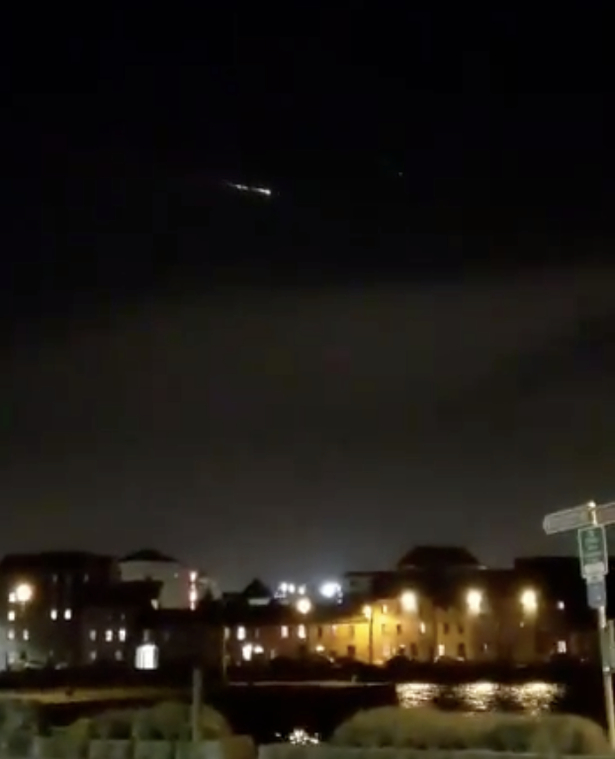
Here's footage of a fireball that was taken in Galway in the west of Ireland:
The American Meteor Society received 19 reports of a fireball over Ireland, Scotland and Wales. AMS member 'Paul K.', also based in Galway, captured this footage of the event:
In addition to seeing the fireball, eyewitnesses in Donegal in northwestern Ireland reported hearing a thunderous boom, which spooked animals.
In the southwest of Ireland, eyewitnesses reported seeing a meteor fireball, but earlier in the evening, at around 7:30pm. Cork resident Mark Dignam said:
"Anyone else see the MASSIVE meteorite over Ireland just before 7:30pm? Incredibly bright for a couple of moments."Astronomy Ireland tweeted that they think people saw a Chinese satellite breaking up in the atmosphere:
"Our chairman David Moore THINKS that this was the rocket body of a Chinese satellite used to launch 'GPS' type satellite in January 2016, reentering Earth's atmosphere."Note the emphasis on 'thinks'. He's guessing.
Stranger still, John Corr, another Cork resident, reported seeing the later 9pm event:
"Just flew west to east across the North sky as seen from Cork. Was visible for about 30seconds. Broke up into a number of pieces and changed colours. Happened at about 21:05So there were apparently two or more fireball events over western Ireland, one hour and 30 minutes apart, going roughly from east to west.
Interestingly, there was another near-Earth asteroid fly-by the day before, on October 3rd, when Asteroid 2019 SP3 made a 'close' approach at roughly 0.97 LD (lunar distance).
That might not sound close, but what they don't tell you about these objects is that their detection of them cannot gauge how much debris it is carrying along with it. If an object has a long train of smaller rocks in tow, our planet can make contact with that train after the main object has 'missed' us...



Reader Comments
to our Newsletter